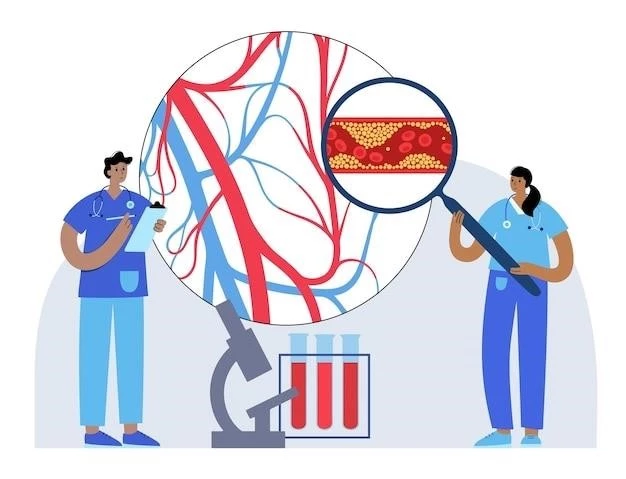Understanding Epithelial-myoepithelial Carcinoma
Epithelial-myoepithelial carcinoma is a rare malignant tumor of the salivary glands. Understanding the nature of this disease is crucial for diagnosis and treatment. Stay informed about the cells involved‚ prognosis‚ and available treatment options.
Introduction to Epithelial-myoepithelial Carcinoma
Epithelial-myoepithelial carcinoma is a rare type of cancer that primarily affects the salivary glands. This tumor is characterized by a combination of epithelial and myoepithelial cells‚ which are found in the glandular tissues. Although it is a malignant tumor‚ it tends to grow slowly and is usually diagnosed at an early stage.
Understanding the behavior of this carcinoma is crucial for patients and their families. Being knowledgeable about the disease can help in making informed decisions regarding treatment options and understanding the prognosis. It is essential to consult with healthcare professionals specialized in treating salivary gland tumors for accurate diagnosis and tailored treatment plans.
As with any cancer diagnosis‚ receiving support from loved ones and healthcare providers is vital in navigating the challenges that come with the disease. Stay proactive in seeking information‚ asking questions‚ and following the recommended treatment plan. Remember that early detection and timely intervention can significantly impact the outcome of epithelial-myoepithelial carcinoma.
Understanding the Cells Involved
Epithelial-myoepithelial carcinoma involves a unique combination of epithelial and myoepithelial cells. The epithelial cells are responsible for lining the ducts of the salivary glands‚ while myoepithelial cells are involved in muscle contraction and glandular secretion regulation.
Understanding the interplay between these cell types is crucial in grasping the behavior of this carcinoma. The intricate balance between epithelial and myoepithelial cells contributes to the growth and progression of the tumor. Research suggests that genetic mutations and alterations in these cells play a role in the development of epithelial-myoepithelial carcinoma.
Patients and caregivers should be aware of the role these cells play in the disease process. By understanding the cellular mechanisms at play‚ individuals can better comprehend the effects of treatment options and potential prognosis. Healthcare providers specialized in salivary gland tumors can provide detailed information about the cells involved and how they contribute to the development and spread of epithelial-myoepithelial carcinoma.
Diagnosis of Epithelial-myoepithelial Carcinoma
Diagnosing epithelial-myoepithelial carcinoma involves a series of tests and procedures to confirm the presence of the tumor in the salivary glands. Diagnostic methods often include imaging studies such as MRI‚ CT scans‚ and ultrasound to visualize the tumor’s location and extent.
Additionally‚ a biopsy is essential for obtaining a tissue sample for laboratory analysis. Pathologists examine the biopsy sample under a microscope to identify the unique characteristics of epithelial-myoepithelial carcinoma cells. This detailed examination helps in confirming the diagnosis and determining the tumor’s grade and stage.
It is crucial for individuals suspected of having salivary gland tumors to undergo a thorough diagnostic process to ensure an accurate diagnosis of epithelial-myoepithelial carcinoma. Seeking care from healthcare professionals with expertise in diagnosing and treating rare salivary gland tumors is essential for receiving a precise assessment of the disease. Remember that early and accurate diagnosis is key to initiating timely and appropriate treatment strategies.
Prognosis of the Disease
Understanding the prognosis of epithelial-myoepithelial carcinoma is crucial for individuals diagnosed with this rare salivary gland tumor. The prognosis of the disease depends on various factors‚ including the tumor’s size‚ stage‚ grade‚ and the patient’s overall health.

Patients should consult with their healthcare team to gain insights into their specific prognosis and personalized treatment plan. It is essential to ask questions‚ seek clarifications‚ and address any concerns regarding the expected outcomes of epithelial-myoepithelial carcinoma.
While epithelial-myoepithelial carcinoma is considered a malignant tumor‚ the prognosis can vary from patient to patient. Some individuals may respond well to treatment and achieve a positive outcome‚ while others may face challenges due to the tumor’s aggressive nature.
Support from loved ones‚ adherence to treatment plans‚ and regular follow-up care are essential components in improving the prognosis of epithelial-myoepithelial carcinoma. By staying informed and actively participating in their care‚ individuals can optimize their chances of a better prognosis and overall quality of life.
Treatment Options Available
When faced with a diagnosis of epithelial-myoepithelial carcinoma‚ exploring available treatment options is crucial. The management of this rare salivary gland tumor typically involves a multidisciplinary approach tailored to the individual patient’s needs.
Treatment options for epithelial-myoepithelial carcinoma may include surgery‚ radiation therapy‚ and chemotherapy‚ either alone or in combination; The choice of treatment depends on factors such as the tumor’s size‚ location‚ stage‚ and the patient’s overall health.
It is essential for patients to discuss treatment options with their healthcare team to determine the most appropriate course of action. Understanding the benefits‚ risks‚ and potential side effects of each treatment modality can help individuals make informed decisions about their care.
Patients are encouraged to actively participate in their treatment plan‚ ask questions‚ and express any concerns related to therapy. By collaborating with healthcare providers and following the prescribed treatment regimen‚ individuals can optimize their chances of effectively managing epithelial-myoepithelial carcinoma and improving their overall prognosis.
Surgical Treatment for Epithelial-myoepithelial Carcinoma
Surgical intervention plays a key role in the treatment of epithelial-myoepithelial carcinoma‚ aiming to remove the tumor and surrounding affected tissue. The type of surgery performed depends on the tumor’s size‚ location‚ and extent of spread within the salivary glands.
Common surgical procedures for epithelial-myoepithelial carcinoma include partial or total removal of the salivary gland affected by the tumor. In some cases‚ lymph node dissection may be necessary to assess if the cancer has spread to nearby lymph nodes.
Patients undergoing surgical treatment should discuss pre-operative preparations‚ post-operative care‚ and potential risks and benefits with their surgical team. Following surgery‚ individuals may require a period of recovery and rehabilitation to regain optimal function.
It is essential for patients to adhere to their healthcare provider’s recommendations regarding surgical treatment and follow-up care. By actively engaging in the surgical process and post-operative management‚ individuals can improve the likelihood of successful treatment outcomes and long-term prognosis for epithelial-myoepithelial carcinoma.
Radiation Therapy for Epithelial-myoepithelial Carcinoma
Radiation therapy is a crucial component of the treatment plan for epithelial-myoepithelial carcinoma‚ aimed at targeting and eradicating cancer cells in the salivary glands. This therapy uses high-energy beams to destroy cancer cells‚ reducing the risk of recurrence and improving overall prognosis.
Patients undergoing radiation therapy should receive detailed information from their healthcare team regarding the treatment schedule‚ potential side effects‚ and expected outcomes. It is important to adhere to the prescribed radiation regimen and attend all scheduled sessions to maximize the effectiveness of treatment.
Common side effects of radiation therapy for epithelial-myoepithelial carcinoma may include fatigue‚ skin irritation‚ and temporary changes in salivary gland function. Patients should communicate any treatment-related concerns to their medical team promptly for appropriate management.
By actively participating in radiation therapy and maintaining open communication with healthcare providers‚ individuals can enhance the success of treatment and optimize their overall well-being throughout the course of managing epithelial-myoepithelial carcinoma.
Chemotherapy for Advanced Cases
In cases of advanced epithelial-myoepithelial carcinoma‚ chemotherapy may be recommended as part of the treatment plan to target cancer cells that have spread beyond the salivary glands. Chemotherapy involves the use of powerful medications to destroy cancer cells and slow down tumor growth.
Patients receiving chemotherapy should consult with their oncology team to understand the specific drugs‚ treatment schedule‚ and potential side effects associated with this form of therapy. It is essential to follow the prescribed chemotherapy regimen diligently to optimize treatment efficacy.
Common side effects of chemotherapy for epithelial-myoepithelial carcinoma may include nausea‚ hair loss‚ fatigue‚ and lowered blood cell counts. Patients should communicate any adverse reactions to their healthcare providers for appropriate supportive care and symptom management.
By actively engaging in chemotherapy treatment and maintaining open dialogue with their medical team‚ individuals can enhance the effectiveness of therapy and improve their quality of life while managing advanced cases of epithelial-myoepithelial carcinoma.
Follow-up Care and Monitoring
After completing treatment for epithelial-myoepithelial carcinoma‚ ongoing follow-up care and monitoring are essential to assess treatment response‚ detect any signs of recurrence‚ and address any concerns or side effects that may arise post-treatment.
Patients should adhere to the recommended follow-up schedule provided by their healthcare team to ensure timely evaluations and surveillance. These follow-up appointments may include physical examinations‚ imaging studies‚ and blood tests to monitor for any changes in the disease status.
It is important for individuals to actively participate in their follow-up care‚ report any new symptoms to their healthcare providers‚ and discuss any lingering effects of treatment. Open communication and regular monitoring can help detect and address any potential issues promptly.
By prioritizing follow-up care and staying vigilant about their health‚ patients can work collaboratively with their medical team to optimize long-term outcomes and maintain overall well-being after treatment for epithelial-myoepithelial carcinoma.
Conclusion
In conclusion‚ understanding epithelial-myoepithelial carcinoma is paramount for individuals affected by this rare salivary gland tumor. From diagnosis to treatment and follow-up care‚ a comprehensive approach involving healthcare professionals‚ patients‚ and caregivers is crucial in managing the disease effectively.
By staying informed about the cells involved‚ seeking accurate diagnosis‚ exploring available treatment options‚ and actively participating in therapy‚ individuals can enhance their prognosis and quality of life. Regular follow-up care and monitoring post-treatment play a pivotal role in ensuring long-term health and well-being.
Facing a diagnosis of epithelial-myoepithelial carcinoma can be challenging‚ but with the right support and guidance‚ individuals can navigate the journey with resilience and hope. Remember that each person’s experience with the disease is unique‚ and personalized care is key to achieving the best possible outcomes.
Together‚ with a dedicated healthcare team and a proactive approach to treatment and follow-up‚ individuals can empower themselves in the fight against epithelial-myoepithelial carcinoma. Stay vigilant‚ stay informed‚ and prioritize your health every step of the way.
